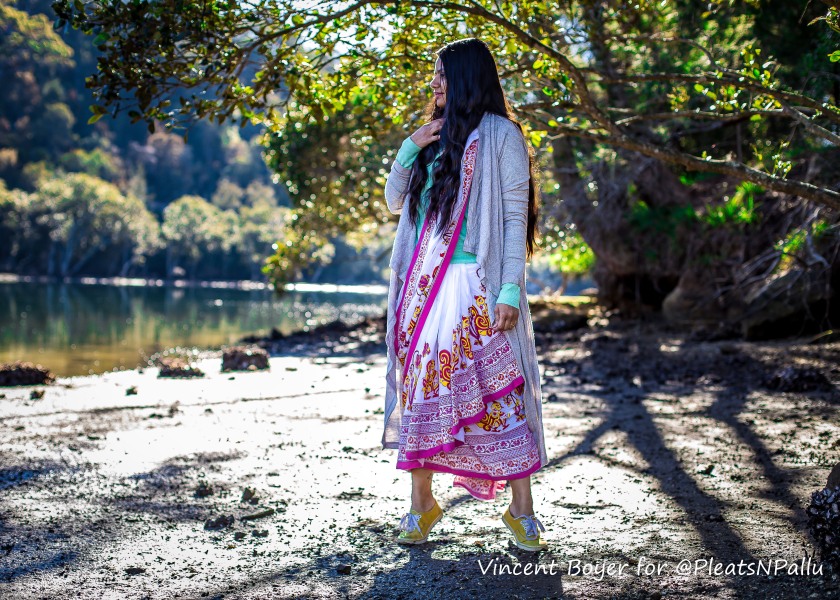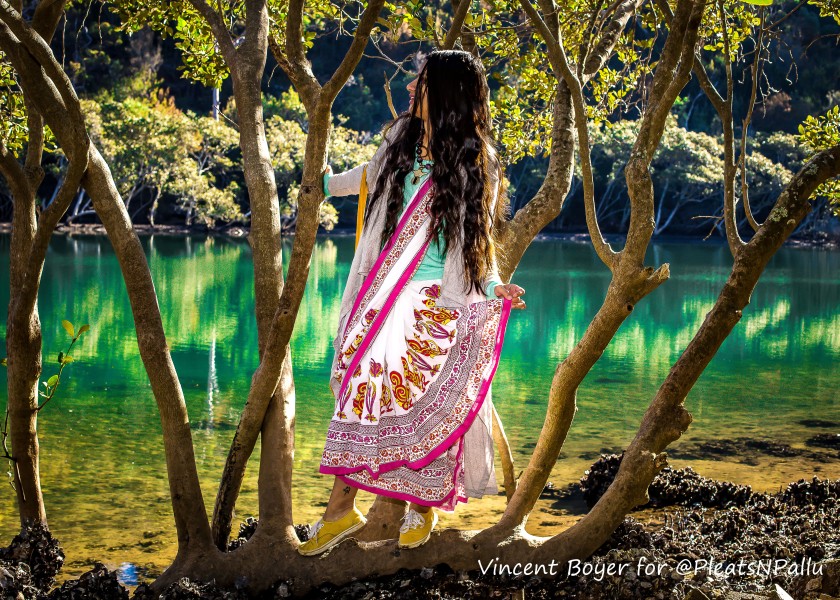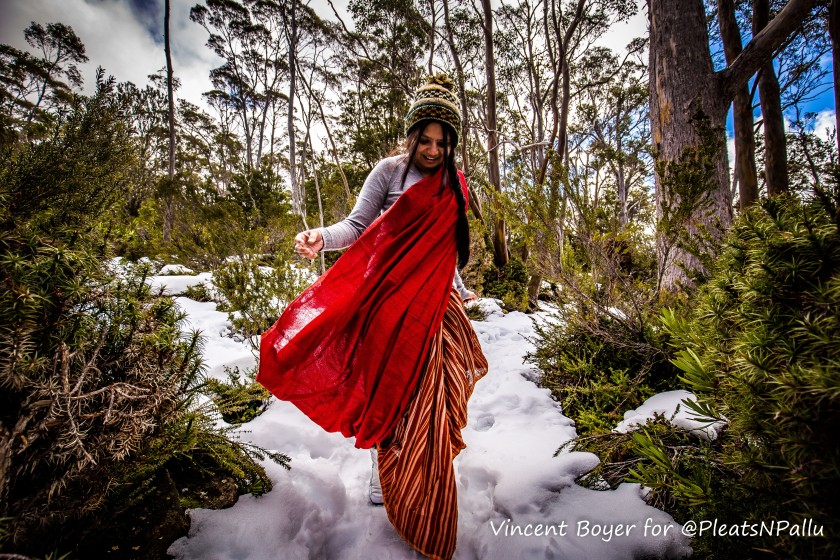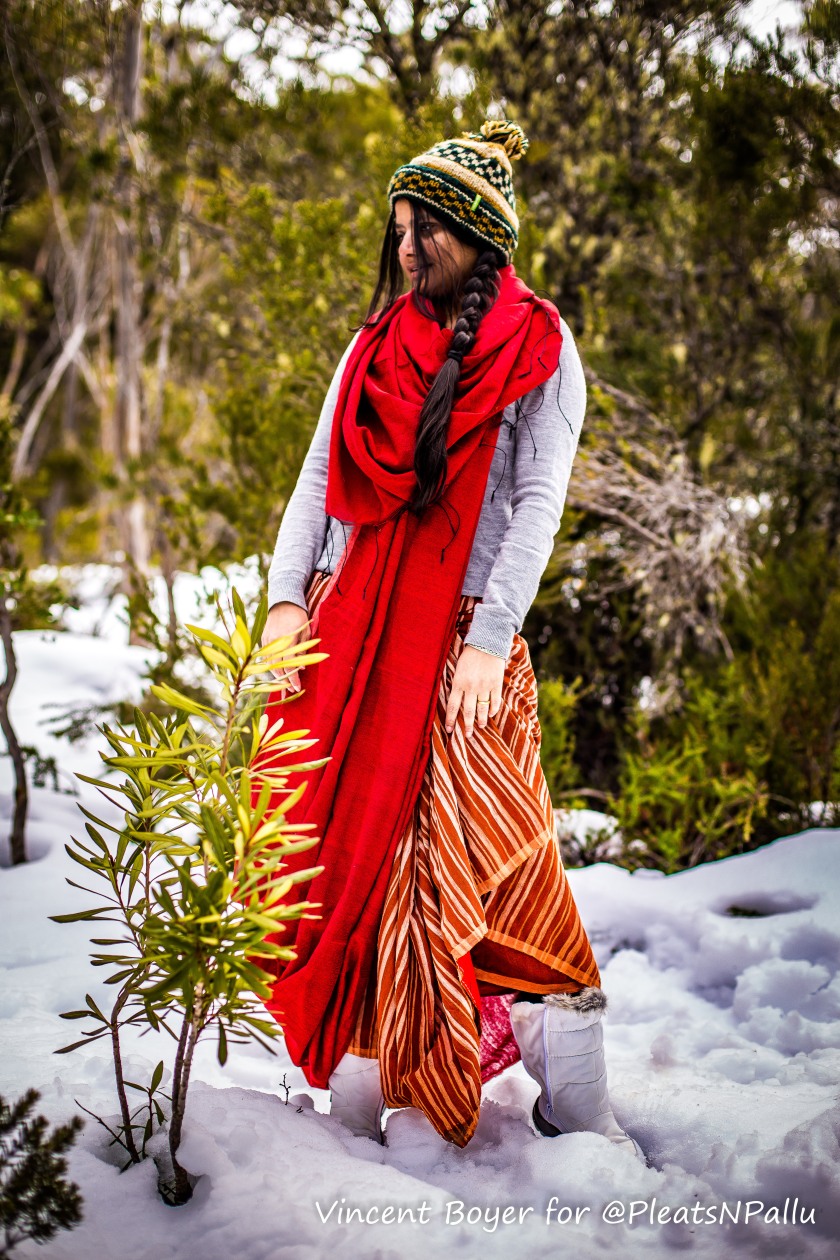Layering the winter saree with cardigans, sweaters and coats without adding bulk is all about playing with length and proportions …



Photos: Vincent Boyer (Say hi on instagram @vincetravelbook)
A handblock printed saree worn with a merino base layer, sweater and long waterfall cardigan, along with sheepskin insoles for my slip-ons all combined to ensure that my winter saree style was not only fun but comfortable.
Bundling up for the colder months and adding layers doesn’t have to add bulk! Cropped sweaters, chunky cable-knits, duster coats, waterfall cardigans, v-necks and striped crews to turtlenecks, oversized cardigans and merino base layers have all helped me continue wearing sarees as the temperatures drop. Examples here, here and here.
I have written posts about wearing sarees in the winter and staying warm here, draping the six yards in the snow here, I have worn it with jeans for winter here and about the unstitched cloth being the ultimate all weather garment here.
When it comes to dressing for the chillier months, it’s all about combinations. Knowing which silhouettes compliment each other and layering my favorite pieces means so many more outfit possibilities than most people can imagine.
A chic knit or the right jacket is the perfect way to upgrade an outfit for the chilly weather as one braves the elements. From bright turtlenecks to patterned pullovers to leather and denim jackets, I’ve rounded up my favourite winter wear that work as wonderful stand-ins for saree blouses while battling a nip in the air.
Sweatshirts: Fleece lined sweatshirts by themselves or over merino base layers work wonderfully with sarees in autumn/winter. Case in point here.
Cropped sweaters: I love wearing my stash of cropped wool sweaters with interesting sleeve details with my six yards and remain forever on the lookout for a perfect vintage piece with fun buttons. A previous example here.
Long cardigans: Wool cardigans of varied lengths make for interesting layers during the colder months. Streamlined or bulky, I love these on their own or under jackets to add dimention to my outfits while staying toasty.
I have a fun collection of duster cardigans in brights as well as neutrals to have fun styling stuff in the winters.
Waterfall cardigans: I love flowy silhouettes, fluid lines and slouchy styling that truly convey the laid back, touseled vibe I like. Knits with interesting details in the front combined with a scarf fashioned out of my pallu is all kinds of fun.
Turtle neck sweaters: Oversize able knit turtle necks are my favourite for work or play and pair beautifully with the unsticthed fabric to create unique looks every single time!
Leather jackets: I believe that a worn-in leather jacket is a versatile piece that can be worn at all times of the day, for any occasion and in nearly every season.
It is a great piece for transitional dressing and layering saree blouses or sweaters in the fall with a leather jacket is the perfect way to tie my outfit together in a fun way.
Denim jacket: I have a thing for oversize, distressed denim. They are fantastic to grab and go plus work wonders with sarees for an understated, casual look.
Striped knits: Nautical or vibrant colour block lines, stripes go with a plethora of patterns and are a great way to elevate one’s cold weather saree style.
Merino, cashmere, mohair, lambswool and angora fabrics on their own or combined with silk keep me incredibly cosy when the temperatures drop.
Those of you who don’t think you could wear winter wear with sarees, think again. Not only is the seasonal combination a practical solution to the frost’s harsh bite, but it’s also all kinds of fun — and super easy to pull off.



